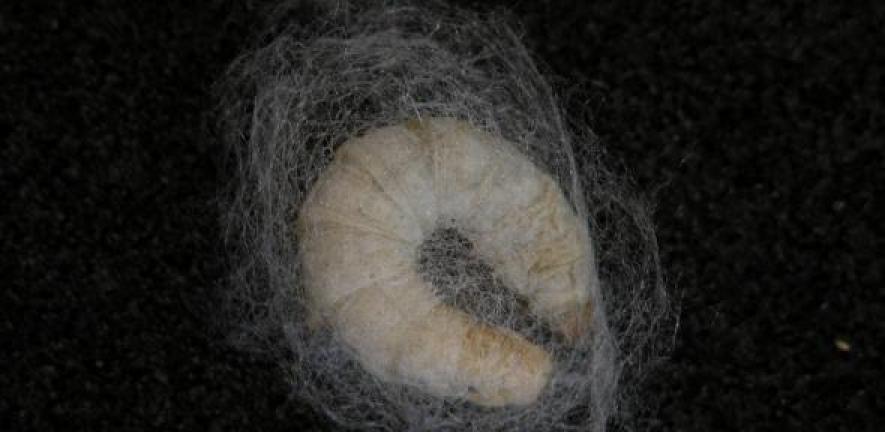
The tiny capsules, which are invisible to the naked eye, can protect sensitive molecular materials, and could prove a significant technology in areas including food science, biotechnology and medicine.
Writing in the journal Nature Communications, the team suggest that these “micrococoons” are a potential solution to a common technological problem: How to protect sensitive molecules that have potential health or nutritional benefits, but can easily degrade and lose these favourable qualities during storage or processing. The study argues that sealing such molecules in a protective layer of silk could be the answer, and that silk micrococoons that are far too small to see (or taste) could be used to house tiny particles of beneficial molecular “cargo” in various products, such as cosmetics and food.
“It is a common problem in a range of areas of great practical importance to have active molecules that possess beneficial properties but are challenging to stabilise for storage” Professor Knowles says. “A conceptually simple, but powerful, solution is to put these inside tiny capsules. Such capsules are typically made from synthetic polymers, which can have a number of drawbacks, and we have recently been exploring the use of fully natural materials for this purpose. We are particularly excited by the potential to replace plastics with sustainable biological materials for this purpose.”
The capsules were made using a specially-developed microengineering process that combines the power of microfluidic manufacturing with the value of natural silk. The process mimics on the microscale the way in which Bombyx mori silkworms spin the cocoons from which natural silk is harvested. The resulting micron-scale capsules comprise a solid and tough shell of silk nano-fibrils that surround and protect a centre of liquid cargo, and are more than thousand times smaller than those created by silkworms.
The same technology could also be used in pharmaceuticals to treat a wide range of severe and debilitating illnesses. In the study, the researchers successfully showed that silk micrococoons can increase the stability and lifetime of an antibody that acts on a protein implicated in neurodegenerative diseases.
A longer version of this article can be found on the University of Cambridge website.

